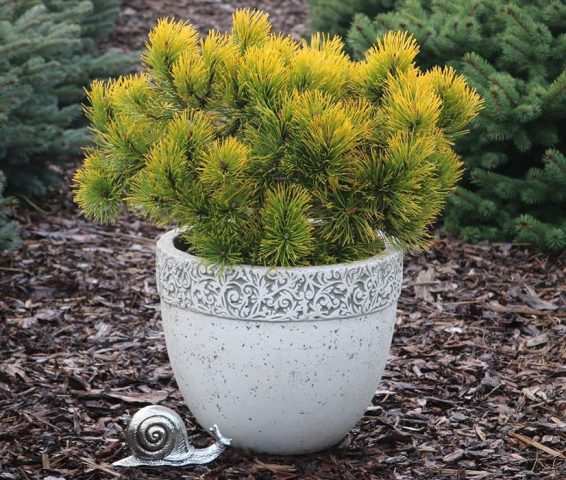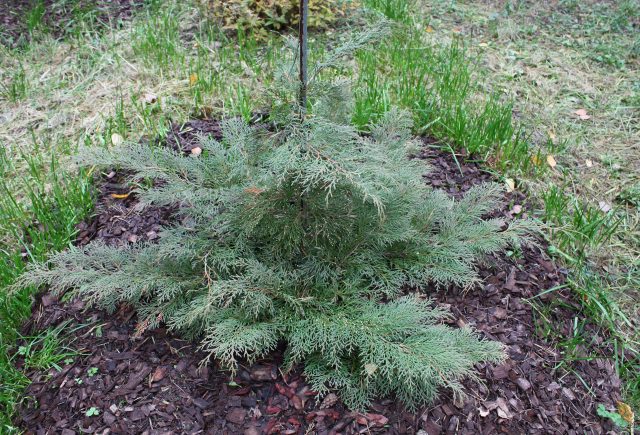Content
Coniferous shrubs with photos and names will help you navigate the numerous offers of nurseries. When purchasing, it is better to take into account not only the characteristics of garden compositions or the unpretentiousness of plants, but also the characteristics of the soil and climate.
Advantages of growing coniferous shrubs on the site
Evergreen shrubs are often the best choice when planning a garden. Coniferous plants are quite unpretentious and take root well in various areas of most of the country. Green shrubs of original shapes are successfully perceived aesthetically at different times of the year, like a bright spot of color. Most coniferous plants have undeniable advantages:
- possibility of placement in the sun, in partial shade or even in the shade;
- undemanding to soil type;
- crown plasticity – receptivity to pruning or haircut;
- release of aromatic healing compounds into the air - phytoncides;
- minimal care required.
Types of coniferous shrubs
For the convenience of novice gardeners, numerous evergreen shrubs of various families can be combined into 3 groups by size:
- tall;
- medium height;
- dwarf.
short
One of the most popular requirements for coniferous shrubs is their small size, which allows you to create picturesque and varied garden ensembles.
Mountain Pine Golden Glow
A slow-growing evergreen shrub will become a bright lantern in the garden not only in winter, but also in summer. The needles of the plant, intensely green in summer, become yellow with the onset of cold weather, especially in the upper half of the needles. By the age of 10, the bush grows to 0.5-0.6 m, reaching a diameter of up to 80-95 cm. The Golden Glow variety is frost-resistant, tolerates - 35 ° C, grows on any soil, in sunny exposure.
Spruce Maxwelly
The height of the Christmas tree bush is 90-100 cm, the dense crown is wide-pyramidal, spreading up to 1.5-1.8 m. Shoots are formed frequently, densely covered with light green needles. The frost-resistant shrub grows on any acidic soil, but requires a moderately moist, well-lit area. Adapts to gas pollution in industrial centers.
Juniper Blue Chip
The popular variety of ground cover creeping horizontal juniper Blue Chip rises to a level of only 20-35 cm. The branches spread out to the sides up to 150 cm.Silver-blue needles take on a darker shade in winter. The plant is not capricious, grows well in loose soils, but may suffer from excess moisture. The preferred exposure is sunny, on rock gardens and rock gardens.
Cypress Aurora
Attracts with its beautiful wavy pattern of natural laying of spirally twisted branches that form a crown with the silhouette of an irregular cone. The height of the bush is 50-65 cm, the diameter of the crown is the same. The plant is frost-resistant, but at the end of winter it should be covered with agrofibre to prevent the needles from burning out in the sun. Loves moist soil and lighted areas. The Aurora variety does not tolerate urban conditions.
Microbiota cross-paired Jacobsen
This hardy plant, originally from the Far East, has some branches that spread along the ground, others that rise slightly, so a support is placed near the bush. The crown height is up to 40-70 cm, the diameter is 30-60 cm. Over the course of a year, the growth of shoots is only 2-3 cm. The scaly needles are dark green, turn brown with cold weather, then turn green again in the spring. Planted in moist, semi-shaded and shady areas, in rock gardens. The shrub is often identified as a type of juniper, but it is closer to the oriental thuja.
Medium height
Evergreen coniferous shrubs of medium height - up to 2 m - are often chosen as a visual focal point for garden compositions. They also provide an interesting backdrop for low-growing shrubs and flowers.
Mountain pine Gnome
After 18-20 years of growth, the shrub reaches more than 1 m in height, after another 2 decades it rises to 2 m. The annual growth is 10 cm in width and 15 in height. The crown is spherical, oval over the years, very dense due to densely growing shoots, with a diameter of 80-90 cm.The needles are dark green, the length of the needles is 4 cm. Planted in the sun, in loose soil. The variety is widely used in urban landscaping.
Spruce Glauka Globoza
Many gardeners consider the Glauca Globosa variety to be a shrub, since spruce grows very slowly - by the age of 30 it reaches 3 m. Rounded crown, 1.2-2 m in diameter, dense due to many short branches covered with prickly, silver-blue needles 1-1 .5 cm long. The variety is undemanding in terms of soil fertility and develops better on slightly acidic soils. The plant is light-loving, drought-resistant, and tolerates frosts below - 35 °C.
Juniperus chinensis Mint Julep
The Mint Julep juniper variety with a thick and spreading crown is named by analogy with a strong cocktail flavored with mint, due to the rich and bright color of the green needles, which seem constantly fresh. The height of the bush is 1.5-2 m, the width of the crown is 2.8-3.5 m. The shoots of juniper are long, flexible, arched. Loves a sunny location, light soil, moderate humidity.
Rashahib's stupid cypress
By the age of 10, the Rashahiba variety forms a dense, wide-pyramidal crown up to 1.7-2 m high. The plant is extremely decorative, thanks to the natural tints of greenery: from intense green in the center of the crown to light green or even yellow shades of needles at the tops of the branches. Young shoots delight with a fresh lemon color. The variety grows in the sun and in light partial shade. The soil is kept loose and moderately moist.
Yew Elegantissima
The Elegantissima variety grows more in width - up to 1.5-3 m, than in height - up to 1.2-2.3 m. The growth of branches per season is 8-14 cm. The apical young shoots are golden yellow in color; from mid-summer they become green-yellow. Because of this feature, the bush is very picturesque in spring. Good development in sun or light shade.The plant is winter-hardy and prefers neutral soils.
Tall
Coniferous shrubs up to 3-4 m high are chosen as material for hedges or as a background for a lawn with flower beds.
Scots pine Watereri
The Scots pine variety Watereri is durable, frost-resistant, with a rounded dense crown that grows almost the same size in height and in circumference - up to 4 m. Gray-blue needles form bunches of 2 needles, 3-4 cm long. The plant is undemanding to soil, but does not grow on saline or too compacted soils. Pine coniferous shrub is light-loving and does not like shading.
Cypress Drakht
The shrub grows 2.5-3 m, the cone-shaped crown occupies a diameter of up to 1.5 m. The fan-shaped branches curl slightly, giving the dense crown pattern a more magnificent appearance. The soft needles are green with a grayish tint. By winter it acquires a bronze tint. The variety is frost-resistant, but does not tolerate drought. Plant in the sun, in loose soil, which is moderately and regularly moistened.
Yew berry Hixie
The coniferous shrub Hicksii is characterized by an original wide-columnar crown that expands upward. Reaches 3-4.7 m in height, diameter from 2 to 2.3 m. The variety is durable, slow-growing - 10-15 cm per year. The needles are soft, dark green, 2.3-3 cm long. Berries are not consumed. Planted on drained, non-acidic loams. Develops in the sun or shade, the soil is moist, but without stagnant water.
Cryptomeria japonica Elegans viridis
The variety is decorative, lends itself well to shaping, grows up to 4-6 m, the width of the thick and dense wide-cone-shaped crown is up to 4 m. The shade-tolerant plant has dark green needles with a bluish tint throughout the year. It is preferable to plant in acidic, moist soils. Tolerates frosts down to -23 °C.
Coniferous shrubs in garden landscape design
The endurance and expressiveness of the silhouette of coniferous shrubs, most of which can be shaped, make the plants highly popular for constructing various garden compositions of different styles:
- low and medium heights are placed as points of attraction on spacious lawns;
- creeping and dwarf specimens are an essential element of rockeries and rock gardens;
- bright green plants of short stature often serve as a strict background for bright flower beds;
- densely planted tall bushes form a division into zones and decorate the walls of buildings and fences;
- Dwarf conifers are often grown as container crops.
How to properly place coniferous shrubs in the garden and on the site
To maintain the attractiveness of the garden, generally accepted rules are followed:
- a flower bed with dwarf coniferous bushes is placed on a spacious area;
- the lowest plants are planted in the foreground in the borders;
- near ponds, deciduous, preferably weeping forms are planted with coniferous bushes;
- variegated varieties are planted spotwise, surrounded by specimens that do not change the color of the greenery.
Original compositions
Often conifers form. Tall and medium-sized junipers, thujas, and cypress trees are modeled, creating interesting examples of topiary art. Everyone chooses from a variety of garden ensemble options:
- in the alleys, evergreen shrubs alternate with deciduous ones;
- low mountain pines are combined with ground cover junipers and creeping perennials;
- red-leaved barberries and potted nandinas create bright contrasts with evergreen shrubs;
- junipers are excellent partners for ferns; dwarf ones are also used as hanging crops.
Hedge
The division between garden zones is made from bushes of different heights: low, medium or tall. Usually the hedge is trimmed. Sometimes tall and medium-sized plants are planted alternately. The densest option for a coniferous fence is to plant shrubs in 3 rows in a checkerboard pattern.
How to choose coniferous shrubs
Almost all conifers are adapted to the conditions of the middle climatic zone. Varietal plants require careful care at a young age, often shelter for the winter. If planting in a country house, choose unpretentious species:
- frost-resistant, up to - 30 °C;
- hardy to spring sun rays;
- drought-resistant;
- undemanding to soil type.
Conclusion
Coniferous shrubs with photos and names are a suitable mini-guide for beginning gardeners. Evergreens will show their austere and majestic beauty in favorable conditions, with appropriate care and placement.

























